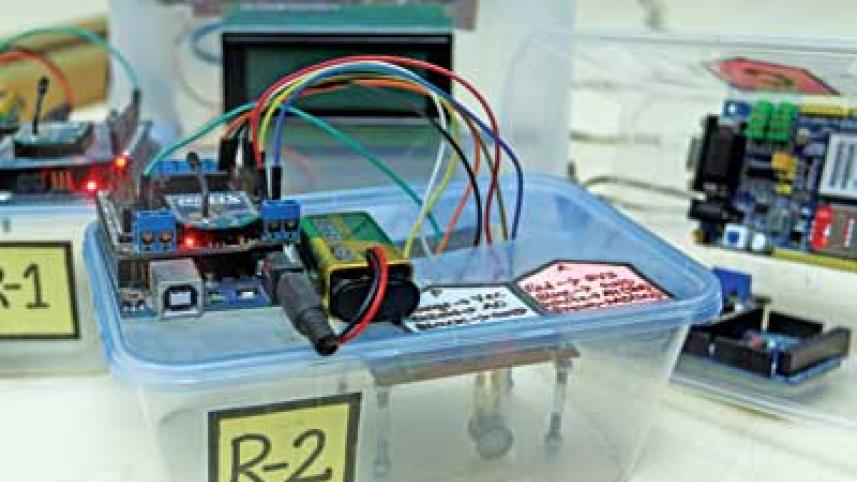THE MUCH NEEDED ALERT

We cannot predict earthquakes beforehand but the idea of a technology to detect earthquakes fast enough for an alert to reach susceptible areas is no doubt good news for us; and more so when it is being designed by our own countrymen.
Rahinul Hoque, Shoaib Hassan, Md Sadaf Akter and Asadullahil Galib, students from Department of EEE at American International University – Bangladesh have invented the prototype of a wireless networking system to detect earthquakes and deliver warnings to keep people and infrastructure from harm's way.
Recently this group has secured first place under the innovation category, in the 3-day ICT expo organised by Bangladesh Computer Samity (BCS), the apex trade association of the ICT industry, and the ICT division of post and telecommunication ministry at Bangabandhu International Conference Centre (BICC).
Using simple vibration sensors and accelerometers, they have developed a system that can send an alert to areas to take precaution before the strong shaking strikes.
“Long before the Nepal earthquake, as a part of our senior thesis, we decided to present the idea to our faculty, Tahia Fahrin Karim, who appreciated it very much”, remembers Hoque. “We had worked for eight months and already submitted our final thesis.”

“Now that we have the prototype completed and it is working just the way we thought, we are thinking of improving it further by adding more sensitive sensors, and continuing our research with Department of Civil Engineering, BUET,” adds Galib.
An earthquake mainly generates two kinds of seismic waves which are P and S waves. P waves travel faster than S waves and rarely causes any damage. P-wave information helps estimate the magnitude of the earthquake. The invented wireless system can provide warning to local populations before the S-wave arrives with the strong shaking that usually causes most of the damage. If the system is set in the fault zone, earthquakes can be detected earlier and people living far away from the fault zone can be warned so that they can evacuate buildings and move to safer places
“The system that we have developed consists of two sensor nodes and a coordinator,” explains Hoque. “When an earthquake will occur, piezoelectric sensors will trigger each node to send ground acceleration to the coordinators. After receiving the data, the coordinator will pass it to the laptop via serial communication. Data acquired from both the nodes will be instantaneously processed and compared in the National instruments LabVIEW software.”
Hassan adds, “The monitoring part ends at the warning part which is controlled by the GSM SMS Mode tab, where the user's mobile number is set. If there is a match, instantly an SMS will be sent to the receiving end, stating warning messages along with type and magnitude of the Earthquake.”
“Because of the low frequency (about 1 to 3 Hz), it is hard to detect P-waves. The sensors used for detecting earthquakes are very expensive and unavailable in Bangladesh. The prototype cost us around 32000 tk, but funds can help us tweak the design to be mass produced more efficiently,” Akter ends.



 For all latest news, follow The Daily Star's Google News channel.
For all latest news, follow The Daily Star's Google News channel.
Comments